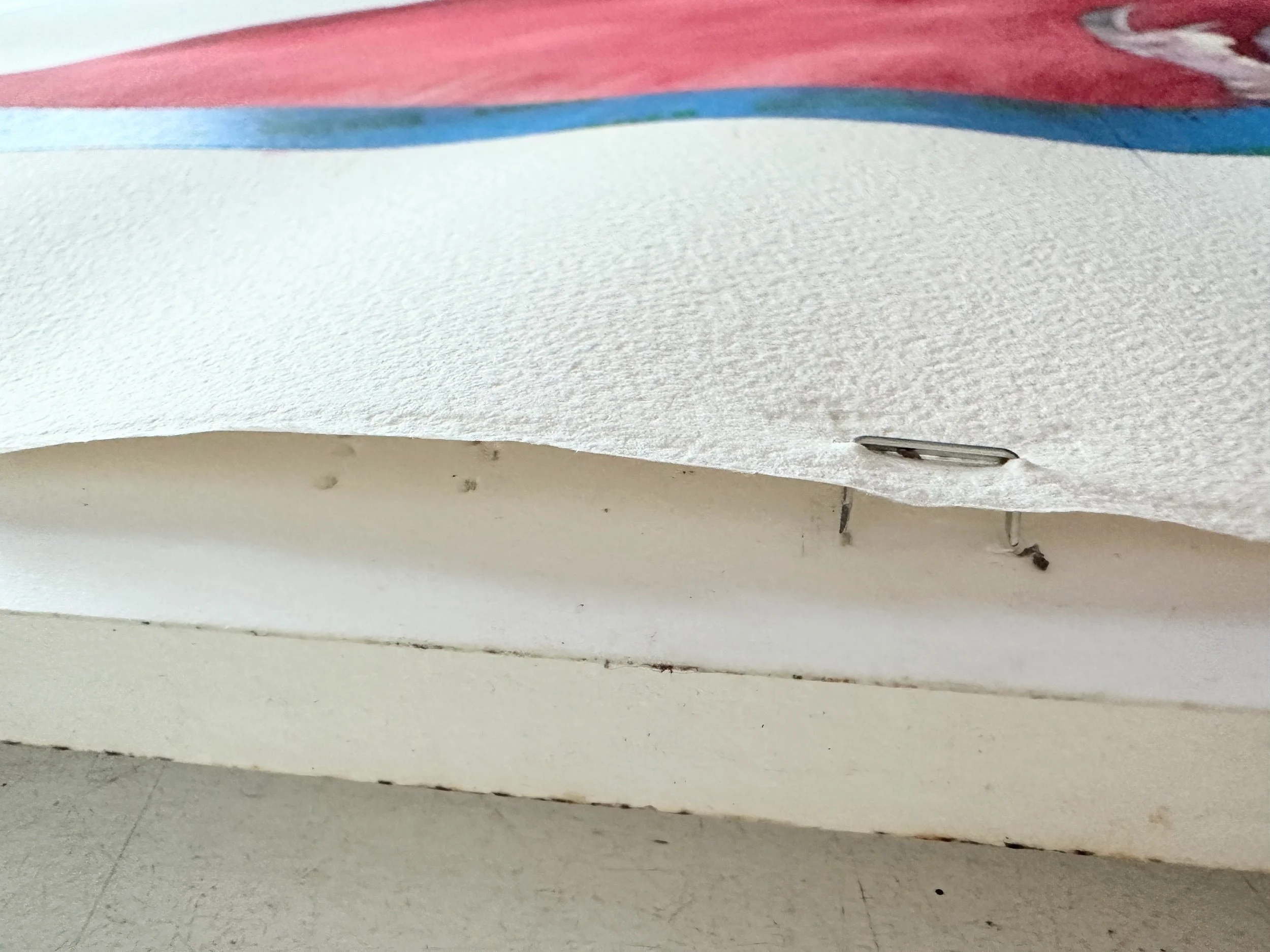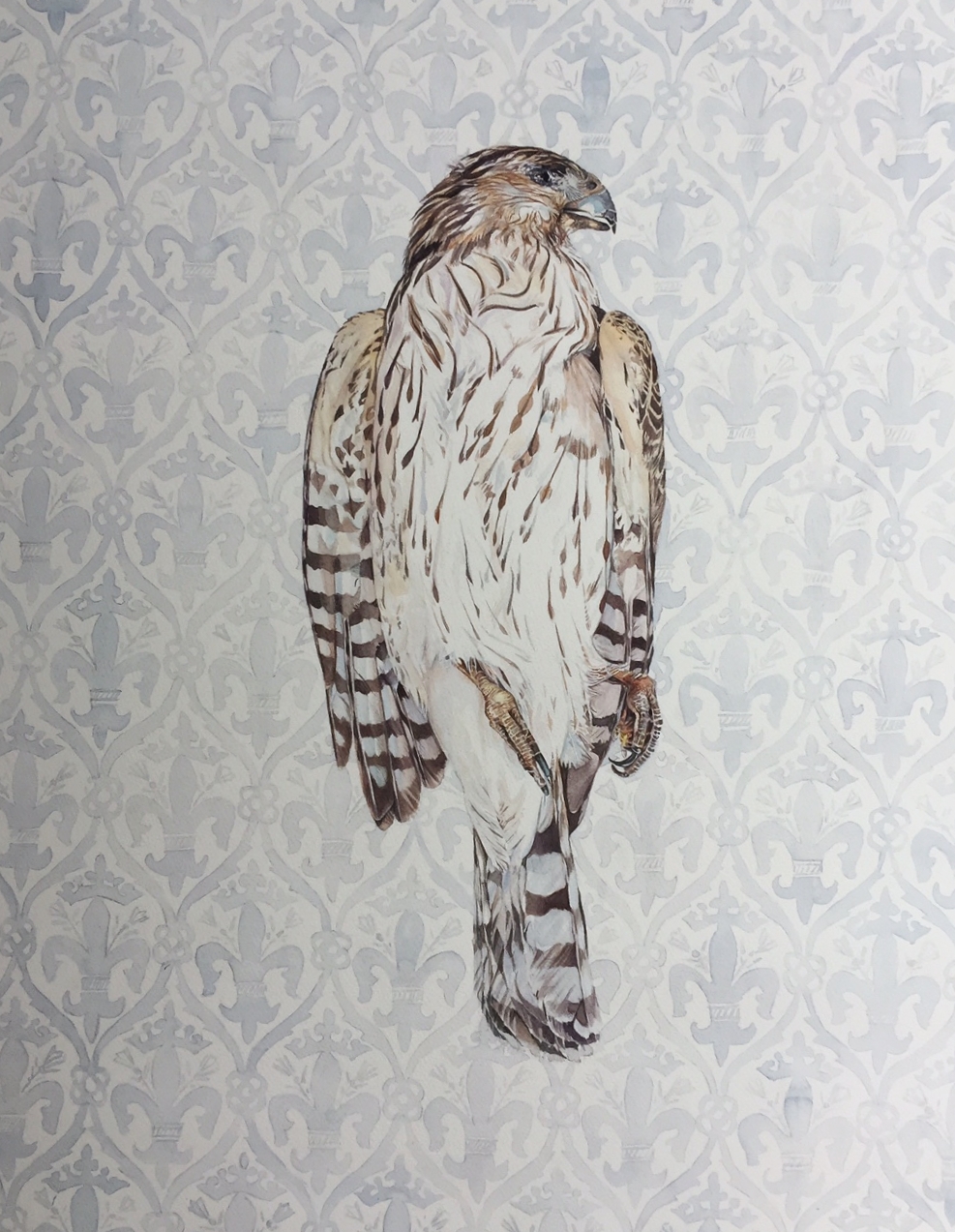Colors represent many things: emotions, organizations, and ideas.
Perhaps, most passionate of these colors may be the color red. In western culture the idiomatic expression, “seeing red” is an expression of anger and rage. Whereas in other countries, the expression could hold an entirely different meaning.
Are we currently only capable of understanding a fragmented spectrum?
Technical Notes:
I began with a limited palette: perylene red, hansa yellow and a violet.
Eventually, after several layers, the limited palette became more inclusive. I added a few more hues in addition to the original three colors. Having at least one staining color, I learned, was needed.
Then, summer humidity became a major issue. I wanted to address the waves it was causing in the paper. And the significant pulling off the board.
Midway through the painting process, the paper was re-stretched. This meant, taking the paper off the gator board and carefully painting water across the back of the watercolor sheet, soaking it. Then adhering it to the gator board again. I use a staple gun.
Thankfully, it dried flat without any water falling upon or touching the previously painted portion. I considered videoing the process but I was already holding my breath. I didn’t want to add anything else which might distract my focus.
For those of you who are watercolor paper enthusiasts, this piece is painted on 140 lb cold, which means it has a slight texture.pressed Arches watercolor paper.












